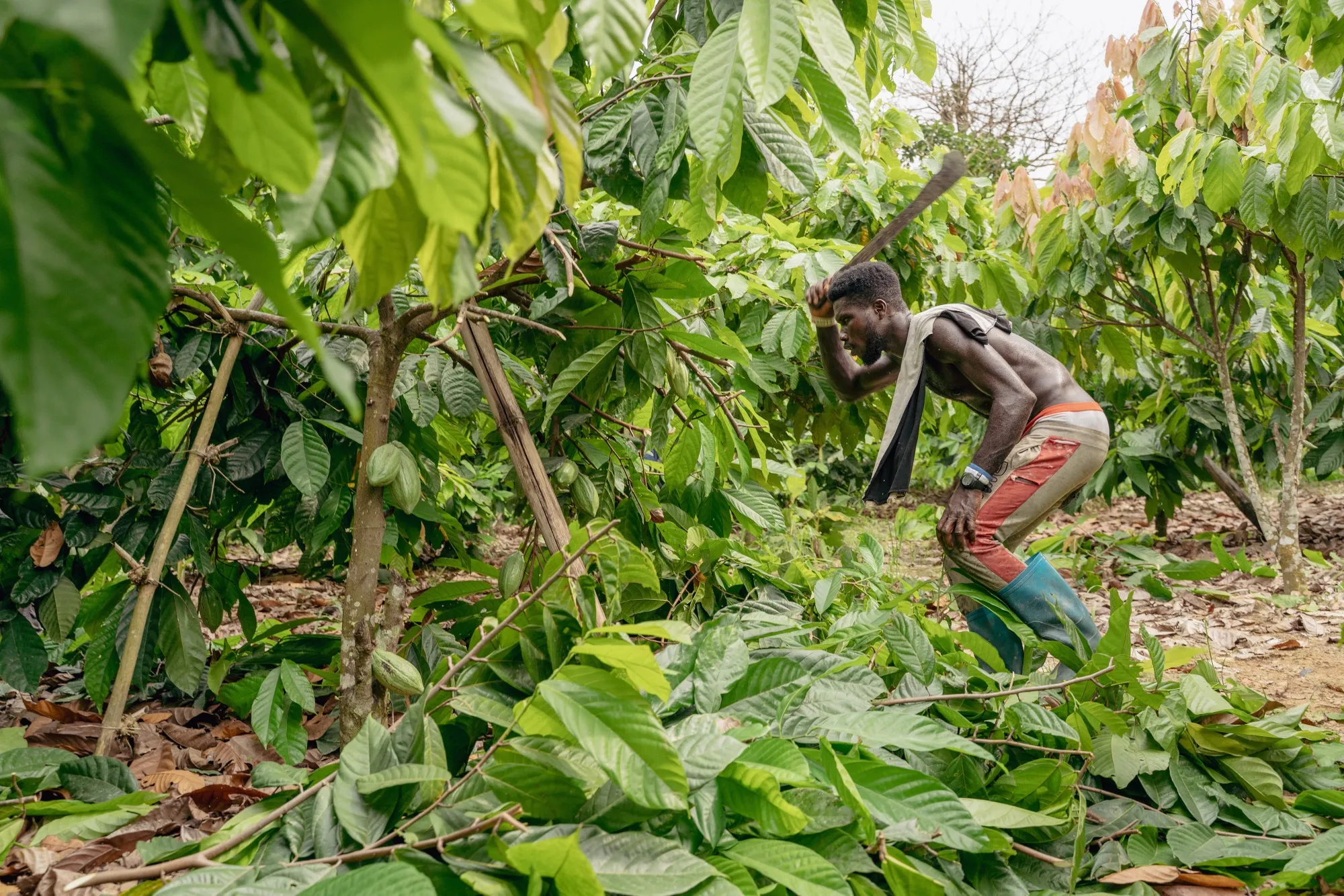
A farmhand prunes trees on a four-year-old cocoa plantation, replanted after swollen shoot disease, in Enchi, Ghana, on March 4.
Photographer: Evgeny Maloletka/BloombergCocoa Crunch Isn’t Over Yet as Top Growers Struggle With Supply
A drive through swathes of West Africa's growing belt showed farmers battling crop disease and dryness.
A dramatic spike in the price of cocoa that roiled commodity traders and candy makers is showing signs of easing, and the top industry group is even predicting a small global surplus, after years of shortages. Chocolate lovers around the world would be forgiven for breathing a tentative sigh of relief.
But on the ground in West Africa, among the thousands of smallholder farmers who supply about two-thirds of the world’s cocoa, the reality is far more complicated. Bloomberg reporters drove some 2,500 kilometers (1,553 miles) last month through key growing areas in Ivory Coast and Ghana. What we found: visibly dry farms with flowers withering on trees, cropland pocked with illegal mines, and producers losing a battle with disease-riddled cocoa plants — all signs the road to recovery will be a tough one.
Africa’s cocoa heartland, which also includes nations like Nigeria and Cameroon, has long grappled with blight and aging trees, leaving farms particularly vulnerable as harsh weather hammered crops in recent years. While international prices spiked as much as fivefold since the end of 2022, the distinct way the top producers sell and price their cocoa mean neither authorities nor farmers have reaped the kinds of windfalls necessary to meaningfully bolster harvests.